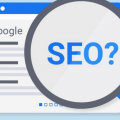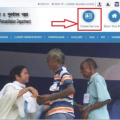Brands that take proactive steps to comfort and protect their customer’s safety and financial confidence will earn a strong reputation through a volatile time. Every message a company sends its customers is even more critical than usual in today’s climate. Words that concentrate heavily on sales and try to market this sensitive situation — may seriously threaten the credibility of the brand.
In the first week of March, Instacart’s distribution platform introduced a new app — Leave at my door — for people quarantined and self-isolated to avoid close contact until they observe lockdown and social distancing. The introduction of Instacart is just one example of proactive customer service in line with the recent customer uncertainty paradigm in the COVID-19 era.
Brands across industrial sectors and regions need to face a new reality:
- Consumer doubts: about visiting or buying your product from your stores. Is it safe to use your product? What safety measures are you taking to make customer surety? Also, are you prepared to serve customers if you can’t open for business?
- Customer queries: about your delivery capability. Can you deliver on time if I purchase your product? Will transportation or supply lead to delays?
- Customer hesitation: to commit. Will I receive reimbursement if I buy an event ticket, or I am unable to use a reservation? What recovery options are available to me if I make a purchase and my financial situation changes later?
These issues will increase call volumes, increase costs, and strain your employees. Brands are only facing the tip of the iceberg yet, as consumers hesitate, postpone, or forgo a purchase altogether.
Brands proactively answering consumer concerns demonstrate consumer centricity, which enhances customer trust and relationships. In an age of significant consumer needs and sensitivities, this is particularly important. Brands decrease anxiety and fix issues before they grow by taking early decisions to protect customers.
Here are three concepts we can use to minimize these risks and maintain customer-brand relationships:
1. Be The Friendly Voice:
The pandemic enhances consumers’ trust in experts to provide crucial information. Now is definitely not the time to stay silent, rather send a simple, straightforward, and transparent, empathetic, meaningful message on energy habits. While the crisis persists, businesses should build content for consumers by offering tips and tools to handle changing energy usage.
Your help desk support may now be completely remote, your volumes of requests will increase, or the change in the world dynamics must have created a different requirement or query. All these changes will significantly affect the ability of your team to fulfill the needs of customers. Maintaining a customer’s experience at such times is crucial in order to sustain customer loyalty.
2. Meet Consumers Where They Are:
During emergencies that require customers to stay at home, evaluate customer voice on all platforms available, including online surveys, emails, social media, telephone, and feedback forms. You may help maintain open feedback collection networks, or initiate research-driven outreach for particular groups or queries. Don’t just collect more data; use a CX solution and learn what contributes to making the maximum impact to your brand.
3. Plan for uncertainty:
Brands should work with utilities to change approaches in real-time because of the constantly evolving conditions. Major brands are not the only ones taking innovative and positive steps. Local and small businesses have also adapted their operations to the new standards. A family-owned provider of music lessons converted to online courses. Fitness centers and sports facilities have begun providing classes online. Arts organizations are streaming concerts and providing interactive gallery tours to share some beauty at a time of considerable discomfort.
Customers are not the only ones to take into account. The credibility of the brand also depends on the communities of employees. The people who operate the business and rely on their employers for income and connections — threatened both by lockdowns and policy for social distance. Enterprises that are just with their employees are always respected by their customers too.
COVID-19 has given brands an unprecedented challenge. It can be difficult enough to ensure that any customer interaction is excellent under normal circumstances. However, in such times of struggle, companies face the additional difficulties of decreased communications, increased noise in social media, and the absence of personal interactions with consumers.
What this constantly evolving climate means for the long-term relationship between customers and the brands remains unknown. Yet companies can use smart technologies to manage consumer experience efficiently and seamlessly in this new phase.
Depending on the business, customer care, and the complexities of the staff, the correct decisions and actions taken by the brand can vary. B2B clients can face disruptions in the supply chain or reductions in income. The following effects of unpredictable consumer sales and reduced mobility and independence induced by quarantine may be felt in B2C brands. Only those businesses that provide proactive help in times of crisis will maintain good ties with both it’s customers and employees.































No Comments
Leave a comment Cancel